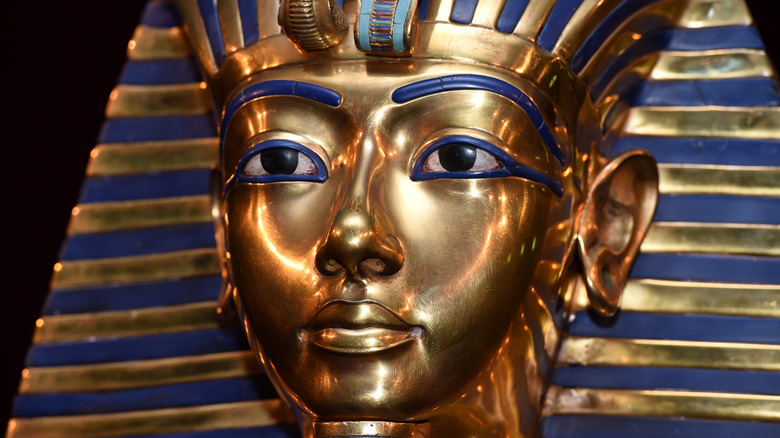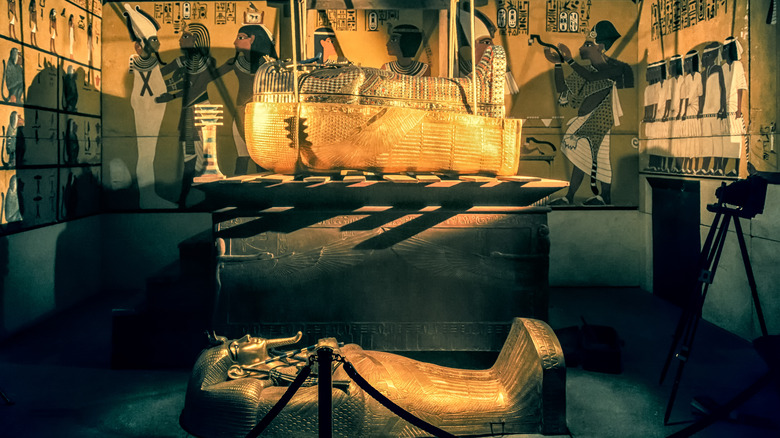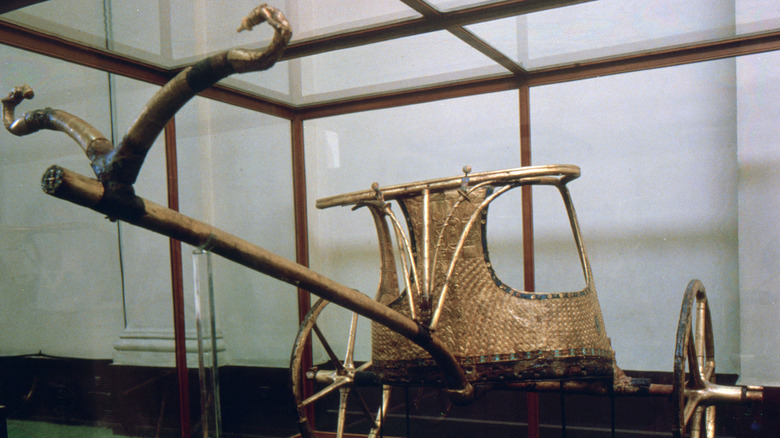This King Tut Theory May Shed Some Light On The Cause Of His Death
Since his tomb was uncovered in the 1920s, the Egyptian pharaoh King Tutankhamun (King Tut for short) gained notoriety, according to The Guardian. Wrapped inside three coffins and a glimmering gold funeral mask, King Tut is one of the most well-known Egyptian pharaohs in history. And in the century since his rediscovery, many questions have been asked about how the king lived and died. One of the most enduring mysteries is how and why the 19-year-old pharaoh died at such a tender age.
Part of the reason King Tut's death is such a mystery is that his remains were in horrible shape for thousands of years after his death, according to Smithsonian Magazine. After being mummified about 3,336 years ago, the embalming oils reacted with sunlight and the linens he was wrapped in, causing the pharaoh's body to burst into flames. And then, when his remains were discovered thousands of years after he was laid to rest, these researchers weren't exactly gentle — archeologist Howard Carter and his team broke almost every one of Tut's bones (per National Geographic). As a result, researchers have their work cut out for them as they try to uncover the actual cause of King Tut's death.
King Tut had a lot of medical issues
There are still many theories about what might have killed King Tut (per The Guardian). Some researchers believe that Tut died due to a combination of health factors, possibly brought on due to a lineage of inbreeding. His own parents were likely brother and sister. Scientists who studied the pharaoh's remains believe he was a frail child who walked with a cane due to club feet and Kohler's disease, the latter of which might have already been causing him immense pain by the time of his death, as it restricts blood flow into the affected foot. Researchers also found that King Tut had scoliosis, a disorder that causes the spine to be abnormally curved.
So Tut probably didn't die of just one condition but rather a combination of factors. After all, he was buried with more than 100 canes and walking sticks, giving researchers more clues about his life. Plus, according to NPR, there is additional evidence that he suffered from ongoing leg pain according to writings found. So although he survived through all of these health challenges, it was a major femur injury that might have caused his rapid demise.
Was the pharaoh racing a chariot when he died?
According to NPR, researchers discovered through x-rays that King Tut had a broken thigh bone. That's the largest bone in the body. Even with modern medical advances, if the femur breaks, it's something that requires immediate medical attention. Dr. Howard Markel, director of the Center for the History of Medicine at the University of Michigan, told Neal Conan (via NPR) that a person could easily bleed out from internal injuries caused by a broken femur.
One of the popular theories suggests that maybe King Tut fell from a chariot while racing and broke his leg. But the truth is probably less glamorous. Chariot racing wasn't a popular pastime in Tut's era. However, he may have been riding a chariot for transportation and tumbled off, per NBC News. Other theories suggest that because King Tut walked differently and required a cane or walking stick, he could have fallen down stairs or simply tripped (via NPR). Additionally, researchers found that King Tut suffered from malaria, which could have been a contributing factor.
National Geographic reports that Tut's injured left leg could have gotten infected, thus ending his short life. There were no signs that the bone started to heal, meaning he died pretty quickly after the broken bone occurred.


